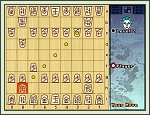| Link to Home Page |
||
|
||
|
These games combine competition-level AI with beautiful graphics. Each game has 2 different piece sets, 2 different boards and 10 backgrounds. The player has the option of 10 play levels and also 14 different AI player characters to challenge. All games support a player ladder so you can advance your player rating as you defeat these players. If you lose, you drop back down the ladder.
Both the east and west products have multiple language options: English, French, German, Italian, Spanish and American. |
||
|
These are the games included in Gizmondo
Classic Compendium 2:
|
||
 |
||
|
Taipei is based on Mah-jong tiles and is part of game mythology. Mah-jong appeared as a game that was reputed to come from the time of Confucius, but actually this is a myth, as the game originated in 1880. However Mah-jong is now well embedded in eastern culture and its beautiful tiles have great appeal. This is the simple and popular tile matching solitaire game based on these tiles.
|
||
 |
||
|
Chinese Checkers, despite its name, does not actually derive from the Orient: its roots are from an earlier Victorian game "Halma", created in 1880. The game was moved from the traditional square halma board to a star-shaped board with hexagonal squares, and re-named in the USA in 1928 as Chinese Checkers.
|
||
 |
||
|
Although having some similarity to Shogi and Chess, the roots of Chinese Chess (Xiangqi) are believed to be much older. The popular game seen today appears to be based on the much older game Liubo invented some 3,500 years ago. Through the large number of Chinese players, this is probably the world's most popular board game.
|
||
 |
||
|
Shogi is a board game par excellance - Japan's rival to western Chess, Shogi is actually more popular in Japan than Chess is in the west. This is not surprising as it is a richer, more dynamic game than Chess, with more possibilities and scope for trading material for positional advantage. Its limited popularity outside Japan is probably due to its dependence on kanji characters, which westerners find hard to read. This version also includes a western-style set.
|
||
 |
||
|
Gomoku originated around the Hwang Ho delta in China as early as 2000 BC. This spread to Japan in 7th century BC where Gomoku became established as a game of choice. Gomoku's popularity is fuelled by being playable on a Go (AKA: Wei-chi and Badu) board with Go counters, so also became a popular quick alternative to the longer and harder game of Go.
|
||